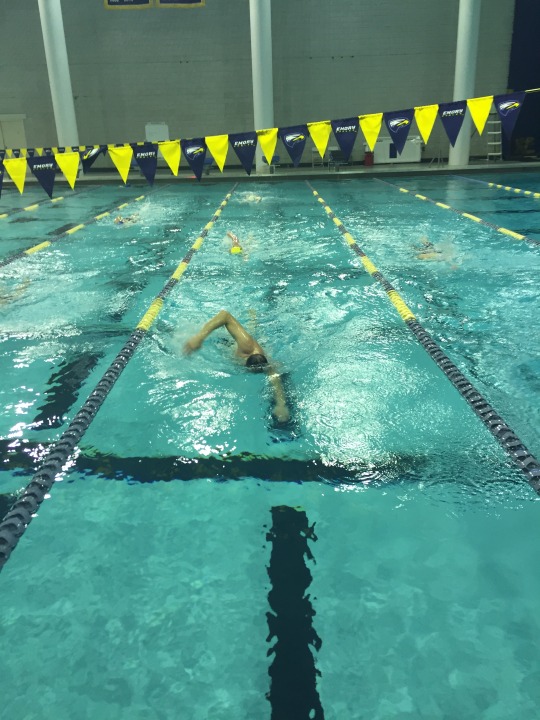By Bryan Wells
Similar to cycling, it is easier to improve your speed in the water by swimming more efficient and reducing drag rather then increasing your power and effort. Most of us focus on the bike and the run segments of our race. However, if the swim is your weak link, then it offers the most opportunity for improvement. In fact, you can perhaps save seconds to minutes off of your race time by making a commitment to perfect your stroke. Here are a few pointers that will enhance your technique and opportunity to podium this season:
Head position:
Your head should be a comfortable, neutral position. The water level should be at your hairline. If your head is too high, your legs will sink and create unnecessary drag. Conversely, if your head is too low, you may “plow” through the water like a barge.
Pull: Your fingertips should enter first as you “catch” the water. Next, you initiate the pull with your hand pointed down. Your hand and elbow then begin to push the water back. Make every effort to keep your elbows high throughout the entire stroke. With this, both your hand and forearm serve as a large paddle.
The larger the paddle, the better. If your elbow drops, then your paddle is smaller and you will hold less
water.
Recovery:
Your recovery should be relaxed. The elbow should be the highest part of your arm during the recovery
with your forearm and hand hanging from your elbow in a comfortable position. Stiff arms and a high or wide overwater recovery wastes energy. At the end of the recovery, be sure to reach straight forward with your arm to avoid crossover.
Breathing:
If possible, it is best to alternate breathe every 3rd stroke. This maintains balance in your body position so you do not favor one particular side. Some swimmers breathe every 2nd stroke on the same side. This provides you more oxygen but may make it more difficult to swim straight. Personally, I alternate breathing every 3rd stroke with every 2nd stroke, or alternating twice to each side. This way, I am able to breath more frequently but continue an even pattern of breathing.
Kick: It is not quite as important to emphasize the kick as you will be utilizing your legs during the bike and run portion of the race. However, a steady kick helps keep the legs at the surface of the water while increasing propulsion and reducing drag. Do whatever is most comfortable to sustain a flat body position so your legs don’t sink.
Rotation: Freestyle is a long axis stroke. It is important to remember to roll your shoulders and your hips together (approximately 45 degrees to each side) while keeping your head and “core” perfectly still.
Rolling makes it easier to breathe. Further, body rotation lengthens your distance per stroke. Lastly, as you are on each side, you are able to use your strong lattisimus dorsi muscles to generate power.
Flip Turn: If you haven’t done this, learn how to do a flip turn!

Above: Neutral head position, high elbow recovery, 45 degree body rotation, and straight
fingertip entry and catch.
The above video puts all swim items together. You may want to watch it a few times to get all the nuances!
Editor’s note: Bryan Wells has been a long-time swimmer, and swam on the 1996/97 Auburn Swim Team. Since then he has coached high school and summer swim teams, and even played water polo for a bit. Now, he puts his swim skills to the test in triathlons.


 SWIM
SWIM
 BIKES
BIKES
 APPAREL
APPAREL
 NUTRITION
NUTRITION
 COMPONENTS
COMPONENTS
 ACCESSORIES
ACCESSORIES
 Podium Multisports Blog
Podium Multisports Blog









